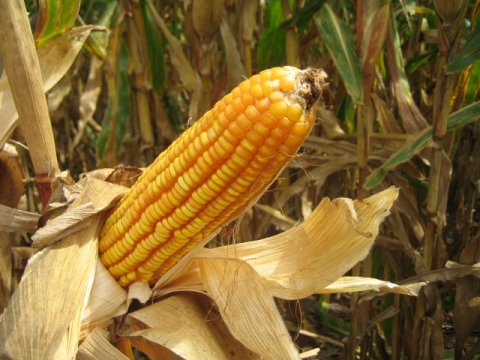Send your question to Umbra!
Q. Dear Umbra,
I’ve been noticing lately a lot of “green” businesses and restaurants in my area using compostable plastics, usually made of corn, if I recall correctly. I can’t compost (I know, I know, but I live in a tiny apartment on the third floor with no porch or yard), and I was wondering if you could tell us any more about this plastic. Should I recycle it, or throw it away? What to do?
Becky B.
Jamaica Plain, Mass.
A. Dearest Becky,
 Corn plastic = not fantastic.USDA.govDoes anyone find pictures of food appetizing? Right now I’m looking at a picture of some artistically arranged marinated olives in a bio-plastic deli container. I love olives. These are just repulsive. Perhaps the key to weight loss is photos of food.
Corn plastic = not fantastic.USDA.govDoes anyone find pictures of food appetizing? Right now I’m looking at a picture of some artistically arranged marinated olives in a bio-plastic deli container. I love olives. These are just repulsive. Perhaps the key to weight loss is photos of food.
I have a bit of scandale for you with these compostable plastic containers. The clear plastic #7 (which really just means “other”) cups and deli containers are made with PLA, which is usually a corn derivative but could also come from cane sugar. I was all ready to dork out on the science of PLA, polylactic acid, but then I read this: “Instead, lactic acid is oligomerized and then catalytically dimerized to make the cyclic lactide monomer.” The weather is too nice to spend time unraveling those polymers. Suffice to say they bacterially ferment the corn, then do all sorts of other stuff to stabilize it and turn it into a plastic. They can then make cups, fabrics, upholstery … but who are “they”?
PLA is manufactured by agribiz giant Cargill at a plant in Blair, Nebraska. Cargill is a major player in the genetically modified corn market, is apparently the world’s largest grain handler, and operates its PLA product division under the name NatureWorks. The long and short of it is that this “green” plastic is made from GMO corn by one of the largest private companies in the United States, one with a terrible track record on environmental issues. Here is a useful overview of the Cargill-corn plastic connection that our own Tom Philpott penned a few years back. There are actual mini-scandals regarding Cargill and PLA, such as them trying to make a partnership with Patagonia for a PLA fleece. Somehow they neglected to mention the GMO corn behind the whole product.
So when we use these cups, we are supporting GMO crops and industrial ag. And we are not necessarily creating less waste; yes, the cups are biodegradable, but only in commercial composting facilities or other composts that reach 150 degrees with 90 percent humidity. So even if you composted in your apartment — which you could! — you likely would not have the right conditions. And there are problems with recycling corn plastic too — check with your friendly JP recyclers to see what they prefer. In the end, these cups can be equal to some products made from oil-based plastic: you just throw them out.
The only lifecycle assessment I could find was obviously pro-Cargill, so I can’t say how much petroleum it takes to make them. But I can say that products from conventional corn, a petroleum-intensive crop, are not the magic bullet. The magic bullet is to bring your own cup (on your bike, of course).
Polylactically,
Umbra



